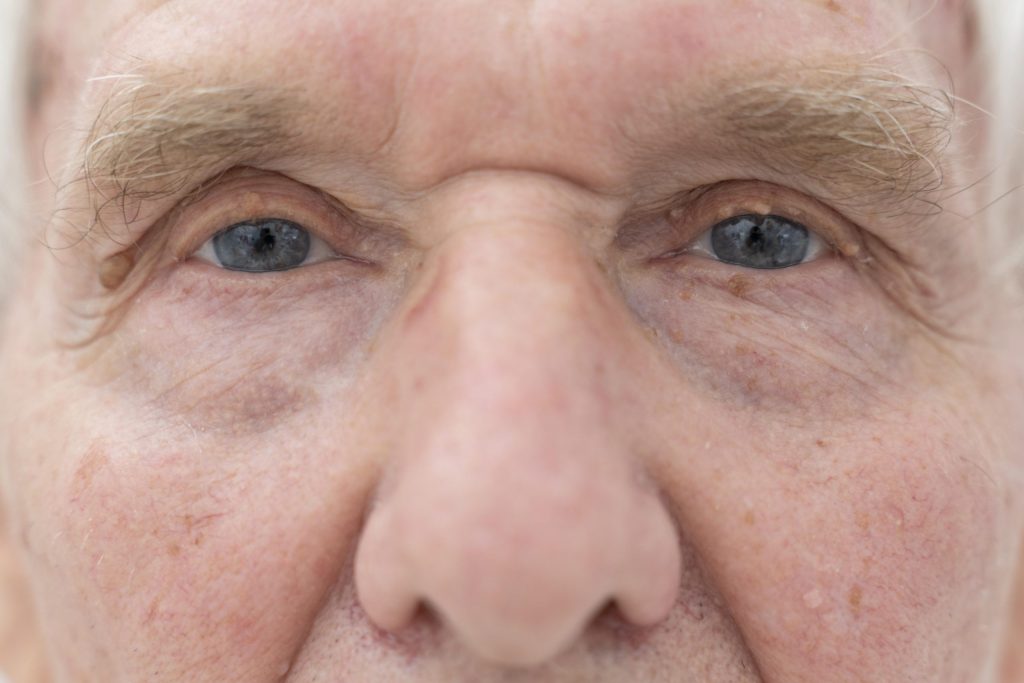The glaucoma is one of the first causes of permanent blindness in the world. It occurs most often in older people and it has been estimated that, worldwide, more than 60 million people suffer from optic neuropathy due to glaucoma. It is a disease characterised by the acquired loss of retinal ganglion cells and axons within the optic nerve, with progressive loss of vision.
Forms of glaucoma
There are four different forms of adult glaucoma: primary open-angle glaucoma and to closed angle e secondary open-angle glaucoma e closed angleof which the main difference is the degree of opening of the anterior chamber angle, which affects the outflow of the aqueous humour and thus the intraocular pressure. In all types of glaucoma, age is an important risk factor for retinal ganglion cell loss. Other risk factors for the development of glaucoma include family history (e.g. a first-degree relative affected by the condition); medical conditions such as diabetes, hypertension, heart disease, ocular trauma, the presence of a thinner-than-normal cornea, history of retinal detachment, tumours or inflammation of the eyes and use of corticosteroids for prolonged periods of time.
In the case of patients with open-angle glaucoma (POAG), the disease is often asymptomatic until the optic nerve damage becomes severe and, therefore, symptomatic, unless early symptoms are present that allow for early diagnosis during a routine eye examination. Acute angle-closure glaucoma, on the other hand, can develop suddenly and cause a more rapid decline in vision, with associated corneal oedema, ocular pain, headache, nausea and emesis. Secondary glaucoma, on the other hand, is usually related to a previous eye injury or a pathological state, characterised by elevated intraocular pressure (IOP) and a related optic neuropathy. A particular form of glaucoma is that of normal pressure or low voltage, in which patients have the same pattern of vision loss as POAG, but have normal intraocular pressure.
Although there are congenital glaucomas, childhood, developmental age and a juvenile variant of POAG, the types of glaucoma mentioned typically occur in persons over 40 years of age. The onset of the disease is generally correlated with increased intraocular pressure, although a direct cause and effect relationship has not been demonstrated.
Currently, glaucoma cannot be prevented or cured, but its progression can be controlled to prevent further vision loss through the use of drugs, laser treatment or surgery.
Glaucoma screening, diagnosis and monitoring
At present, there is no test that represents the 'gold standard' for glaucoma diagnosis, so specialists must be able to recognise the characteristic appearance of the optic nerve, risk factors and compare the results of specific examinations, in order to establish a correct diagnosis and staging of pathology. The clinical evaluation is therefore based on different types of diagnostic tests: examination of the bottom of the eye, examination of the field of viewtonometry, optical coherence tomography and gonioscopy. Other useful tests include measuring thevisual acuity to assess visual impairment, pachymetry to assess corneal thickness and retinal scans to monitor progressive changes in the retinal nerve fibre layer.
L'American Academy of Ophthalmology recommends routine comprehensive eye examinations for patients at risk of glaucoma, with the frequency determined on an individual basis, taking into account age, risk factors, race and family history. To monitor disease progression, visual field examination and retinal mapping.
Treatment options
The management of glaucoma depends on the type diagnosed and the severity with which it presents. However, at present, there is no treatment that can reverse the loss of sight that has already occurred, but further damage can be prevented.
Open-angle glaucoma is generally managed, at least initially, with eye pressure-lowering drugs such as prostaglandin analogues. In some cases, even the laser trabeculoplasty is used as the primary treatment option. If pharmacological management fails to achieve therapeutic success, procedures such as laser trabeculoplasty, trabeculectomy, insertion of a drain/shunt valve or laser treatment of the ciliary body can be used to establish better control of IOP to reduce the production of aqueous humour. La minimally invasive glaucoma surgery (MIGS) is another option for those with mild to moderate glaucoma, with a favourable safety profile and fast recovery time.
Even normal-tension glaucoma can be managed with drugs to lower intraocular pressure, but, at the same time, any other possible underlying medical conditions must be treated.
In the case of angle-closure glaucoma, urgent action is required, because the intraocular pressure reached can be so high as to cause optic nerve damage. Patients must take medication to reduce their eye pressure as quickly as possible, but a laser procedure called a laser procedure is also usually necessary. peripheral iridotomy. Once the acute crisis has resolved, patients are at high risk of having a seizure in the contralateral eye and, therefore, should be considered for gonioscopy and prophylactic iridotomy in the other eye.
Finally, in the management of secondary glaucoma, the underlying cause must be identified and treated in the first instance, with the possible addition of drugs to lower intraocular pressure.
Educating the patient
Glaucoma is a serious chronic illnesswhich can cause permanent vision loss if not treated properly. Therefore, it needs to be managed as well as possible. For this to happen, the cooperation of the patient is also crucial, who should be educated on the importance of medication compliance and the need for a regular follow-up by the ophthalmologist.
Regular eye examinations and medication adherence are vital to slowing down the progression of the disease. Since glaucoma has a hereditary component, it is very important to educate the prevention family members of glaucoma patients, as they may be at greater risk of developing glaucoma and may need to undergo regular eye screening for early diagnosis.

